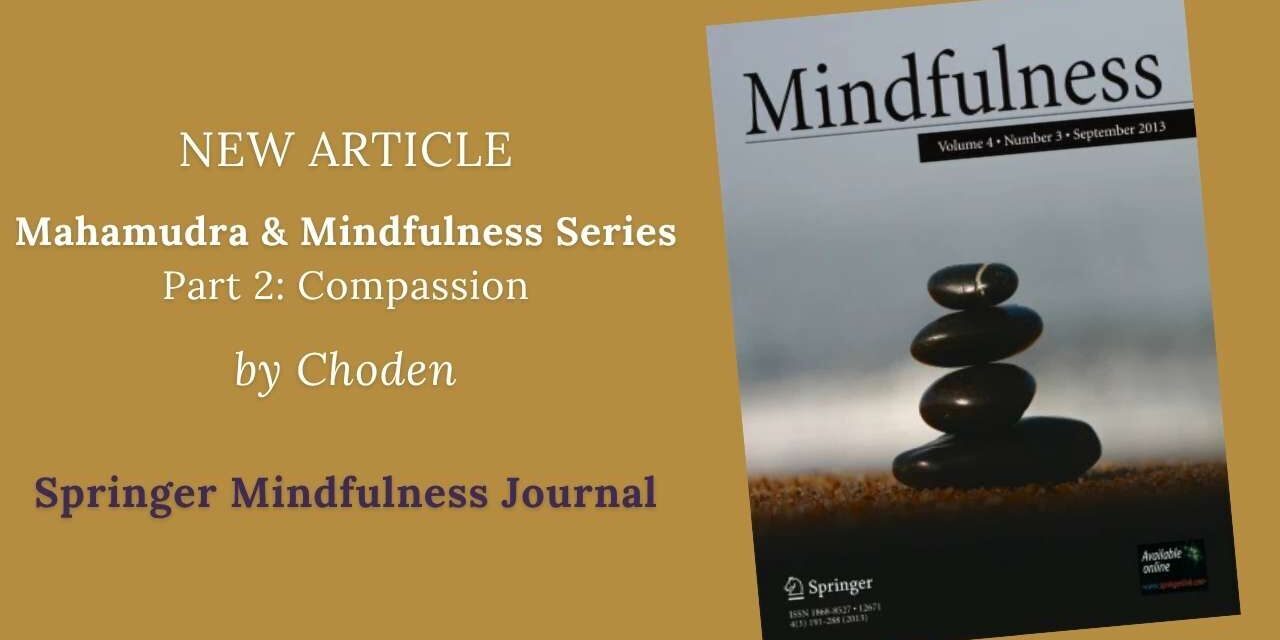The Springer Mindfulness Journal has published the second article of the Mahamudra and Mindfulness Series, written by Mindfulness Association tutor and Buddhist monk Choden. As with the first article, Choden explores a central tenet of Mahamudra teaching – this time compassion – and how it is central to modern mindfulness practice.
Compassion is fundamental to the work of the Mindfulness Association. This is exemplified in the phrase “compassion is at the heart of everything we do”, and how it infuses all their work, from the free daily meditation guided practice to the MSc Studies in Mindfulness programme at the University of Aberdeen. This article helps us explore the meaning and practice of compassion in a way that allows it to be both grounded in its Buddhist past and relevant in helping us navigate the ups and downs of 21st century life.
Choden acknowledges that the word “compassion” can carry a lot of baggage, making it seem like something unobtainable, especially as people can see it as “an ascent to holiness and perfection”. He gently and skilfully demystifies compassion, highlighting Rob Nairn’s teaching that compassion practice is not about being above others, pure or perfect, but instead about descending into our messy humanity, making peace with it and developing empathy and compassion for all aspects of ourselves. It is about allowing the mud of the messy humanity to germinate the seeds of compassion that bloom into the lotus flower.
This approach is liberating as it opens up the practice of compassion to all, even those who believe “I am just not a compassionate person”! It provides a boundless emotional context in which we can approach our messiness, our worries, our pains, our fears and our human imperfections with kindness.
Choden goes on to fuse the past and the present in his discussion of the Mandala Principle, its role in Mahamudra practice and how it closely relates to modern practices like “The Wheel of Awareness”. What Choden manages to do is take the traditional and transpose it onto the modern in a way that is natural, understandable and reinforces the importance of lineage, shared tradition and practice to all practitioners, spiritual or secular. The Mandala practice in the article expands on this discussion and makes it experiential, allowing the practitioner to get a taste of this for themselves.
The approach in this article and the series as a whole is a brave one. By focussing on the traditional roots of mindfulness, Choden is giving a voice to an aspect of the practice that has been ignored or quietly pushed aside after the briefest of acknowledgements in much of modern mindfulness writing. Choden is making a clear and coherent case for why the traditional and modern work hand in hand, and why the past can help us understand now. As they say, if you don’t know where you’ve come from, how can you know where you are going?
Read the full article here and look out for further posts as the series of articles are published.


